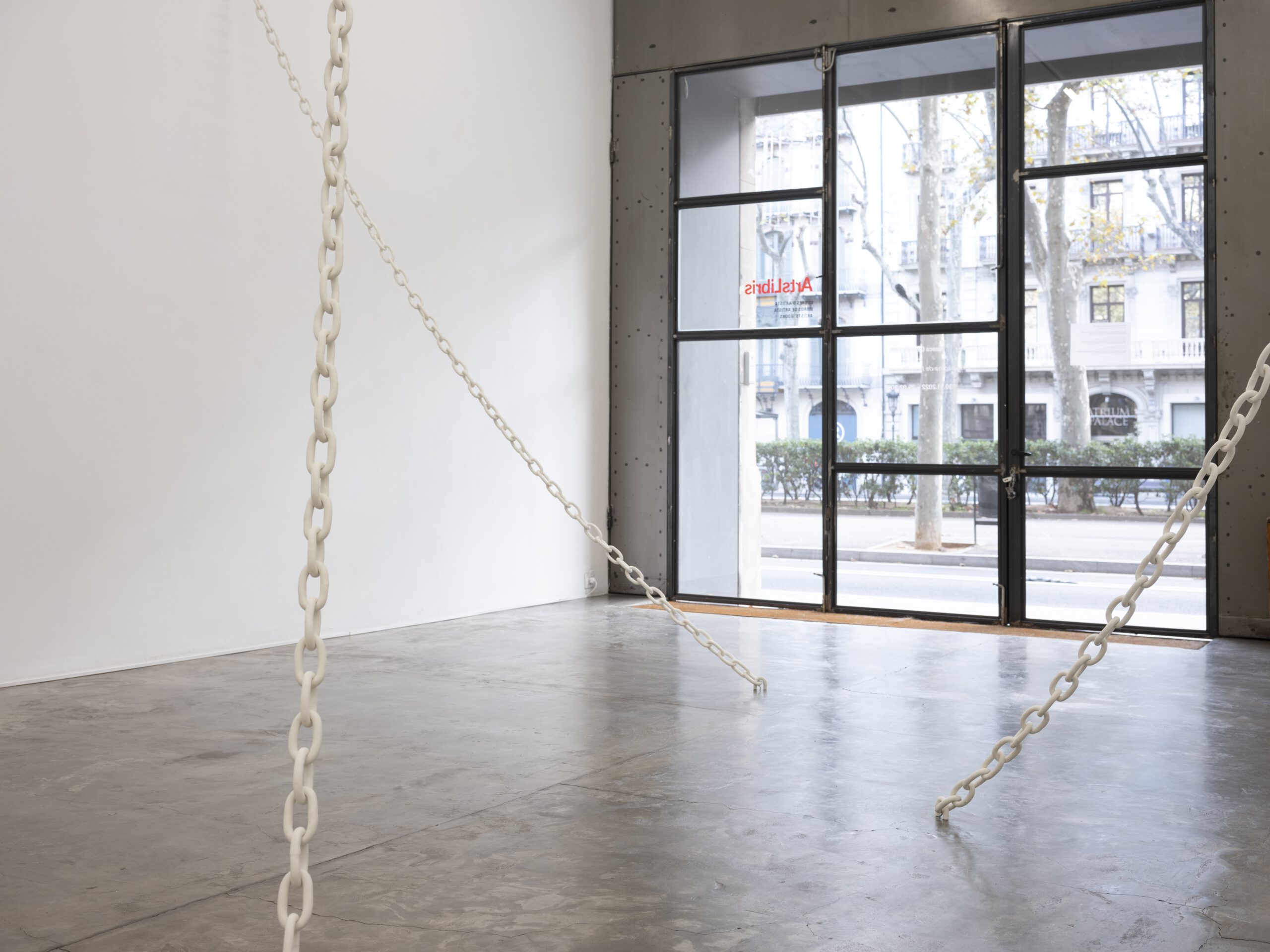A page of history crumples – Blanca Casas Brullet

A page of history crumples – Blanca Casas Brullet
How do we face change or, on the contrary, how do we face continuity?
What is their economy, what kind of work do they entail?
This is not necessarily the initial questioning of Blanca Casas Brullet, but the one that is imposed on those who view her work. The economy of means and materials is considerable, and inversely proportional to the long period of work and reflection involved in their production. Among the low ecological footprint materials used by the artist we find ceramics, found objects, crumpled accounting notebooks and animation software, which she submits to a conceptual approach, that is to say, she develops a long and repetitive work, often manual, of great precision.
This questioning, stimulated by Casas Brullet’s work, reflects the current concern for the political and socio-economic structures of democracy, which are being eroded worldwide. The artist renders these questions literal by applying an abstract language to them: is change destruction; why is destruction so rapid and so effective; what is left for us; how should we act?
The video “Chute”(The Fall) (2022), in which a grid unravels, comes to mind, along with the work “Coin” (Corner), (2022), a corner of a wall that folds in on itself. These two pieces reference, like much of the artist’s work, the page and the grid. The gridded page of the ledger, often used by the author, is a political space in which data, numbers, categories are established to weave a story that is both personal and collective: an economy.
It is this predetermined structure that the artist comes to disrupt. These pages and these grids imply an order. To disrupt them implies a labor of interference. For example, the drawings presented later on, in direct dialogue, “Barricades” and “Legal” (both 2019) relate a structure of opposition, the barricade, to a structure of organization, the gridded page from which fallen squares accumulate at the lower. This reminds me of a 2015 work, “Veiled,” light-sensitive paper pages seemingly crumpled but retaining the marks of a grid. They are both folded along orthonormal lines, and crumpled by a hand having compressed them. This work of interference is continued elsewhere in the exhibition, through the works “Chaînes” (Chains)(2022), which are actually chains made of porcelain, a precious but ecologically sustainable material, seemingly solid but potentially fragile. These chains are placed where the viewer’s body would stand or pass through, so that the viewer must negotiate his or her relationship to the space.
If a page of history crumples, that is, if political reality destroys what seemed to be taken for granted, but new solutions also appear, what can be done? Further on, a protocol work can provide an answer, “Haikus of the Heterogeneous” (2022). These sculptures are always made according to the same precepts: combining three found elements and joining them without forcing them: no glue, no nails. The haiku itself does not problematize the moment it keeps in itself. It lets it exist, simply by making a small cession in the fabric of reality, opening itself to a space not only of freedom but also of attention and humility.
– Joana P.R. Neves –
– Les interferències de Blanca Casas Brullet. Conxita Oliver. El Temps de les Arts. 19.12.22
– Perejaume, Eulàlia, Blanca casas. Victoria Combalia. El País. 28.12.2022
Con el apoyo de / Amb el suport de / With the collaboration of

